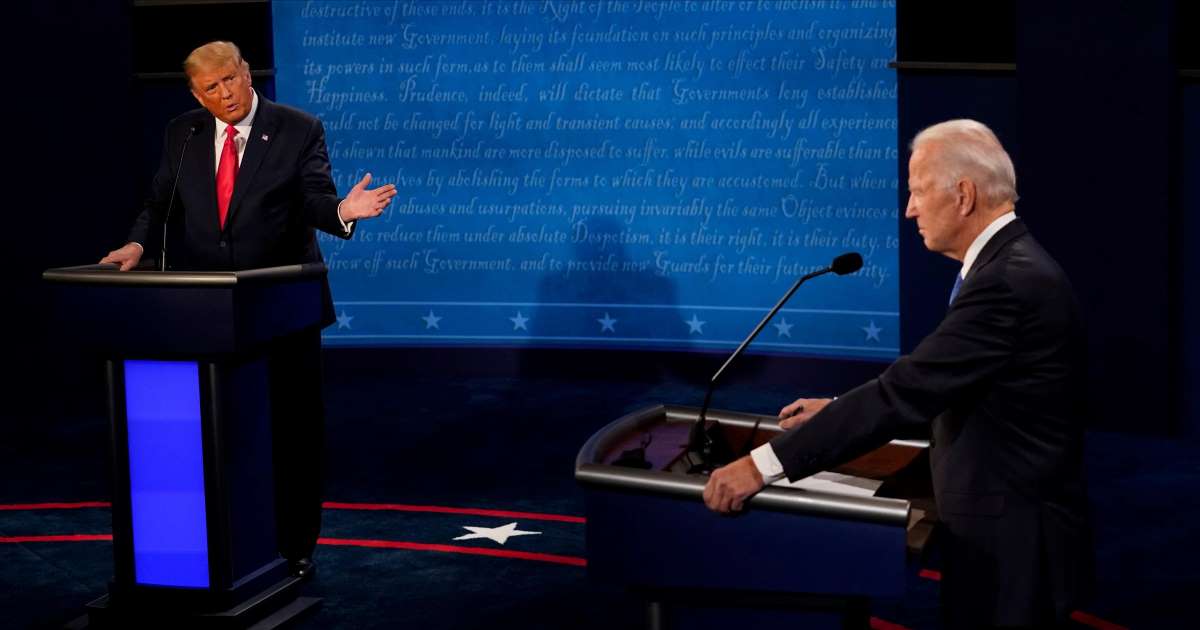For those Americans wondering whether their 401(k)s will see a bigger boost under Donald Trump or Joe Biden as president, it turns out that the stock market cares more about which party controls Congress than it does about which one wins the White House.
Stocks have typically thrived under legislative gridlock in Washington, and a split Congress has historically been the best scenario for investors.
Since 1950, the average annual stock return for the broad S&P 500 stock index was 17.2% under a split Congress, according to LPL Financial. It falls to 13.4% when Republicans control both the House of Representatives and the Senate, and drops to 10.7% when Democrats control both chambers.
That suggests that markets may prefer divided power come November because it would make it harder for lawmakers to undo policy measures already in place, experts say. The Republicans currently control the Senate and Democrats the House.
“Markets tend to like checks and balances to make sure one party doesn’t have too much sway,” according to Ryan Detrick, senior market strategist at LPL Financial.
When broadening the scenario to include the presidency, the best situation for stocks since 1950 has historically been a Democratic president and Republican Congress, while a Republican president and Democratic Congress has been the weakest, according to Detrick.
A possible explanation is that a majority of recent economic expansions have ended under GOP administrations. For instance, 10 of the past 11 recessions started while a Republican was in the White House. The one exception was President Jimmy Carter.
The stock market typically performs its best when the incumbent party wins an election. One reason why is because the status quo is maintained, which signals to investors that the U.S. economy is holding up well enough that the incumbent isn’t voted out of office, according to Keith Lerner, chief market strategist at SunTrust Private Wealth Management.
The market, however, has tended to do worse when the incumbent party loses, he added.
And the odds of Biden defeating Trump are rising, and Democrats may sweep Congress. Raymond James boosted its estimates for a Democratic sweep to 55%, up from 50%, with a 65% chance of a Biden victory. The investment firm lowered its estimates of a “status quo” Trump victory and split Congress to 30%, down from 35%.
Markets don’t like uncertainty. Among investor concerns are what happens not only if Biden wins, but if Democrats regain the Senate, too. A Democratic sweep could raise the risk for more regulations and potential tax increases, some experts argue. Democrats already control the House.
There is a greater than 55% chance of a Democratic Senate majority, according to Raymond James.
Higher business taxes directly impact the earnings of publicly traded companies, which may flow through to stock prices. The Trump administration lowered the corporate tax rate from 35% to 21%, which boosted corporate profits and helped lift markets. A Biden administration may raise the statutory rate back to 28%, but it would likely take a Democratic sweep of Congress to enact, experts say.
Conventional wisdom would suggest that a Democratic sweep would be negative for markets, especially for heavily regulated industries, but further economic pain could demand more fiscal support from Washington, Raymond James said. That could help boost economic growth.
Lerner is advising clients to be cautious on selling stocks based on next week’s election outcome alone because they could miss out on future gains.
In fact, excluding the 2008 financial crisis outlier, the average path of the S&P 500 during years that the party in power loses is roughly in line with the average for all election years.
Investors selling just prior to President Barack Obama taking office would have missed out on a 26% total return year in 2009 and the kickoff to the second strongest bull market in history, according to data from SunTrust Private Wealth Management. And investors selling just prior to President Trump taking office would have missed out on a 22% return in 2017, the figures showed.
Although financial markets could remain bumpy near term, especially if the election results are dragged out, Lerner remains optimistic that the U.S. economy is in the early stage of a recovery, helped in part by unprecedented measures this year from the Federal Reserve and Congress.
In theory, there are industries that stand to benefit from one side or another winning. Under a Biden presidency, renewable energy, infrastructure and stocks affected by trade policy stand to benefit. Alternatively, under Trump, defense and aerospace, energy and financials could perform well.
In a blue wave sweep, the U.S. can expect corporate tax increases, continued fiscal relief and spending, along with health care and technology regulation, Raymond James analysts said. In this scenario, cyclical stocks tied to the economy’s possible expansion would outperform, helped by fiscal stimulus, according to Raymond James.
In a split Congress scenario, technology stocks would perform the best with a Biden victory, along with a Republican Senate and Democratic House, Raymond James said.
Other factors beyond Washington can influence sector returns, and analysts are still betting long term on sectors like technology that have thrived in a stay-at-home economy.
The top two best-performing sectors and the worst two have been the same under both President Obama and President Trump. Consumer discretionary and technology both posted double-digit returns during both of their presidencies, while financials and energy were the bottom two performing sectors.
Following the last presidential election outcome, the consensus was that financials, energy and small caps would be beneficiaries, but each underperformed the S&P 500.

